In today’s fast-evolving business environment, where employee skills and engagement are critical to staying competitive, organizations are placing greater emphasis on human resource development. Practical HRD functions not only enhance workforce capabilities but also drive long-term growth and innovation.
But what exactly are human resource development functions? Why are they essential beyond traditional HR tasks? And how can the proper development techniques transform your workforce and business outcomes?
In this blog, we’ll simplify the concept of human resource development functions, explain their importance, and explore key techniques that help organizations nurture talent and boost performance.
Let’s dive in.
TL;DR
- Human resource development functions strengthen skills, performance, and engagement through training, career planning, and coaching programs.
- Core HRD elements like performance management and succession planning align employee goals with long-term business growth.
- Effective HRD techniques include skills gap analysis, SMART goal-setting, blended learning, and post-training evaluation.
- Proven methods such as workshops, work rotation, and tuition assistance drive continuous learning and innovation across industries.
- Trends like AI-driven learning, DEI integration, and hybrid work readiness are reshaping modern HRD strategies and tools.
Understanding Human Resource Development
Human Resource Development (HRD) plays a crucial role in nurturing employee growth and aligning talent with business goals. For example, if a company offers upskilling programs in emerging technologies, employees are more likely to feel motivated and stay long-term. It goes beyond routine HR tasks, serving as a strategic framework within Human Resource Management (HRM) that shapes workforce capabilities.
Below are the key aspects that define HRD and its role in today’s organizations:
- Definition of HRD: A continuous process of training, career development, organizational development, and performance improvement, commonly practiced in manufacturing and IT sectors.
- Enhancing Organizational Success: HRD builds a skilled and adaptable workforce that increases productivity and innovation, which is crucial in industries such as healthcare and finance.
- HRD as a Framework within HRM: Integrates learning, development, and talent management into broader HR strategies to align people with business goals, widely adopted in retail and consulting.
Partnering with experienced HR development providers like TeamLease ensures access to best-in-class practices and tools tailored to your industry.
With a clear understanding of what HRD entails, let’s now look at its core functions that drive employee and organizational growth.
Core Functions of Human Resource Development
Human Resource Development (HRD) encompasses key functions like training, career development, coaching, and performance management. These elements collectively enhance employee potential and drive organizational efficiency.
According to a report by the Association for Talent Development (ATD), companies that invest in comprehensive training programs see 218% higher income per employee than those that don’t.
Below are the core functions that make HRD an essential pillar of long-term business success:
1. Training and Development
Training and development are essential for equipping employees with the skills and knowledge necessary to perform effectively and grow professionally. These activities keep the workforce adaptable in a rapidly changing business environment.
Below are key elements of practical training and development programs:
- On-the-Job Training: Hands-on learning integrated into daily tasks, every day in manufacturing and retail.
- E-Learning and Virtual Courses: Flexible, tech-driven modules widely used in IT and finance sectors.
- Workshops and Seminars: Interactive sessions focused on skill-building and knowledge sharing, widespread in consulting and healthcare.
- Mentorship Programs: Experienced employees guiding new hires or juniors, often seen in professional services and education.
2. Performance Management
Performance management aligns individual goals with organizational objectives, ensuring continuous feedback and improvement. It fosters accountability and drives higher productivity.
Here are the core components involved in performance management:
- Goal Setting and KPIs: Clear, measurable targets are used across industries like sales and manufacturing.
- Regular Performance Reviews: Frequent check-ins and formal appraisals to track progress and address gaps.
- 360-Degree Feedback: Multi-source evaluations promoting balanced insights, common in corporate and creative sectors.
- Coaching and Development Plans: Personalized growth strategies to improve employee skills and motivation.
3. Career Planning and Development
Career planning enables employees to visualize their growth paths within the organization, thereby increasing motivation and reducing turnover. It supports aligning personal ambitions with company needs.
Below are key approaches to effective career planning:
- Individual Development Plans: Customized roadmaps outlining skills and roles for future advancement, used in IT and finance.
- Job Rotation: Temporary assignments across departments to build diverse experience, prevalent in manufacturing and retail.
- Training for Leadership: Preparing high-potential employees for managerial roles, typical in hospitality and consulting.
- Internal Job Postings: Transparent openings encouraging career mobility within the company.
4. Succession Planning
Succession planning enables organizations to seamlessly fill critical roles, ensuring business continuity and leadership stability. It identifies and nurtures future leaders proactively.
Here are the key practices in succession planning:
- Talent Identification: Spotting high-potential employees early, especially in leadership-heavy industries like finance and tech.
- Development Programs: Focused training to prepare successors for strategic roles.
- Knowledge Transfer: Structured handovers and mentoring to retain institutional knowledge.
- Contingency Planning: Preparing backup candidates for unforeseen vacancies.
5. Employee Engagement and Well-being
Engaged and healthy employees are more productive and loyal. HRD focuses on creating a positive work environment that supports the physical, mental, and emotional well-being of its employees.
Below are strategies commonly used to boost engagement and well-being:
- Employee Surveys and Feedback: Regularly gauging satisfaction and areas for improvement.
- Wellness Programs: Health initiatives, mental health support, and flexible work arrangements, popular in tech and healthcare.
- Recognition and Rewards: Acknowledging achievements through bonuses, awards, or shoutouts.
- Work-Life Balance Initiatives: Flexible hours, remote work options, and family-friendly policies.
Team Lease helps organizations identify skill gaps early through structured assessments, making workforce planning more proactive and data-driven.
Knowing the functions sets the context; now it’s time to dive into the techniques that bring these functions to life.
Key Techniques in Human Resource Development
Human Resource Development (HRD) isn’t just about offering training, it’s about building adaptable, goal-driven learning systems. In fact, the World Economic Forum reports that 44% of workers’ core skills are expected to change by 2027, highlighting the urgency for continuous development.
That’s why HRD must focus on agile strategies that evolve with workforce and business needs. Here are the key techniques used to build effective HRD systems:
1. Identifying Needs and Skill Gaps
The first step in HRD is understanding where capability gaps exist and what skills are needed to meet future business demands.
Below are common approaches used for identifying development needs:
- Skills Audits: Reviewing current capabilities versus job requirements.
- Performance Data Analysis: Using appraisal results to uncover recurring weaknesses.
- Industry Benchmarking: Comparing internal skill levels with industry standards.
- Employee Surveys: Direct feedback on training interests and improvement areas.
2. Crafting Initiatives with Clear Objectives
Well-defined goals keep development efforts focused and results-driven. Each initiative should support individual growth while meeting business outcomes.
Here are effective ways to set objectives:
- SMART Goals: Specific, Measurable, Achievable, Relevant, and Time-bound plans.
- Role-Based Targeting: Tailoring goals to different functions like sales, operations, or engineering.
- Alignment with KPIs: Linking training goals with measurable performance indicators.
- Leadership Involvement: Getting managers to define team learning objectives.
3. Implementing Training and Development Programs
Once goals are in place, the next step is to deliver impactful learning through relevant formats and platforms.
Below are implementation techniques that work across industries:
- Blended Learning: Combining classroom, e-learning, and hands-on practice.
- Microlearning Modules: Short, focused lessons ideal for time-constrained roles.
- On-the-Job Coaching: Real-time support from supervisors or peers.
- Cross-Functional Training: Upskilling across departments to boost agility.
4. Monitoring and Evaluating Effectiveness
Tracking outcomes ensures that development programs deliver ROI and drive meaningful change in behavior and performance.
Common techniques for measuring success include:
- Pre-and Post-Assessments: Comparing knowledge or skill levels before and after training.
- Training Feedback Forms: Collecting reactions and suggestions for improvement.
- Productivity Metrics: Tracking output changes post-training.
- Behavioral Observations: Managers noting practical skill application.
5. Integrating Feedback and Performance Management
HRD becomes more powerful when tied into the organization’s broader performance system. Continuous improvement relies on consistent feedback loops.
Below are methods to close the loop:
- Performance Reviews: Incorporating learning goals into appraisal discussions.
- Peer Reviews: Encouraging 360-degree feedback to support development.
- Progress Dashboards: Visual tracking of training completion and skill growth.
- Employee Input: Using learner feedback to refine program content.
By leveraging digital learning platforms and hybrid training models, Team Lease supports scalable, flexible HRD strategies across sectors.
Techniques are only as powerful as their execution. Let’s now explore proven methods that make HRD initiatives more effective.
Methods for Effective Human Resource Development
Effective Human Resource Development (HRD) relies on a mix of tailored methods like mentoring, on-the-job training, and digital learning platforms. These approaches should align with employee roles and organizational goals.
For example, using a skill gap analysis, a company might launch microlearning modules for sales teams to improve negotiation skills on the go.
Below are proven methods organizations use to strengthen their HRD strategies:
1. Holding Seminars and Workshops for Skills and Team Training
Interactive sessions help foster both technical and soft skills, while also building stronger team collaboration.
Common methods include:
- In-person or virtual workshops on communication, leadership, or tech tools.
- Guest-led seminars by industry experts for domain-specific insights.
- Group role-play and case study exercises to simulate real-world challenges.
- Team-building activities that improve collaboration and trust.
2. Giving Education Facilities and Tuition Assistance
Encouraging higher education and certifications ensures long-term talent development and employee loyalty.
Effective approaches include:
- Tuition reimbursement policies for accredited programs.
- Partnerships with universities for flexible learning paths.
- Access to online learning platforms with curated content libraries.
- Support for skill-based certifications in industries like IT, finance, and healthcare.
3. Brainstorming and Encouraging Innovation
Creating space for creative thinking leads to new ideas and helps employees feel valued for their contributions.
Key techniques include:
- Scheduled innovation hours for pitching ideas or product improvements.
- Cross-departmental brainstorming sessions for diverse perspectives.
- Hackathons or challenge days to solve business problems creatively.
- Open-door policies that welcome ideas at all levels.
4. Rewarding and Recognizing Achievement
Recognition boosts morale, motivation, and reinforces behaviors that align with company goals.
Ways to reward and recognize include:
- Spot bonuses or performance-based incentives.
- Public shout-outs during meetings or in newsletters.
- Employee of the month programs are tied to HRD achievements.
- Promotion and growth opportunities based on learning milestones.
5. Work Rotation for Optimal Performance
Rotating roles gives employees broader exposure, increases agility, and builds leadership pipelines.
Popular rotation models include:
- Job shadowing across departments like marketing, ops, or finance.
- Project-based assignments in different teams.
- Structured rotation programs for future leaders in sectors like manufacturing and BFSI.
- Temporary cross-functional roles to fill skill gaps and boost versatility.
Through consistent measurement and real-time feedback mechanisms, Team Lease ensures your HRD initiatives remain effective and future-ready.
Effective HRD methods don’t just upskill individuals; they also transform organizations. Here’s how HRD contributes to broader organizational development.
Enhancing Organizational Development through HRD
Human Resource Development (HRD) strengthens both individual potential and organizational resilience by fostering continuous learning and adaptability. It directly supports cultural alignment, leadership pipelines, and long-term growth.
For example, when a company integrates leadership coaching into its HRD strategy, it often sees faster decision-making and stronger cross-team collaboration.
Below are key ways HRD contributes to long-term organizational development:
- Goal Alignment: Training programs ensure individual and team goals align with company-wide objectives, especially in fast-paced sectors like IT and finance.
- Culture Building: HRD initiatives promote transparency, inclusion, and continuous learning, essential for creating a positive work culture in service and healthcare industries.
- Leadership Development: Structured mentoring and coaching prepare employees for leadership roles, supporting succession planning in large enterprises and startups alike.
- Internal Communication: Workshops and collaboration tools help improve cross-functional communication and build stronger professional networks.
- Employee Empowerment: Skill-building programs boost confidence, autonomy, and innovation, leading to higher retention and performance.
- Change Readiness: Continuous learning keeps teams adaptable during organizational shifts, such as digital transformation or restructuring.
- Team Synergy: Group training activities enhance collaboration and trust across departments, critical for project-based industries like construction or consulting.
Whether it’s building leadership pipelines or supporting DEI initiatives, Team Lease empowers organizations to create a thriving, resilient workforce.
Now that you’ve seen the strategic impact of HRD, let’s turn our attention to emerging trends shaping its future.
Recent Trends in Human Resource Development
As workplaces evolve, Human Resource Development (HRD) is shifting to prioritize personalization, digital learning, and inclusive growth opportunities. According to LinkedIn’s Workplace Learning Report, 94% of employees say they would stay longer at a company that invests in their learning and development.
This highlights the growing need for HRD strategies that align with employee expectations and future-proof workforce capabilities. Below are key trends shaping modern human resource development:
- Tech-Driven Learning: AI-based platforms, LMS tools, and mobile apps are personalizing upskilling experiences in industries like IT, BFSI, and healthcare.
- DEI Integration: Training modules now prioritize diversity, equity, and inclusion, fostering psychologically safe environments in global teams.
- Hybrid Work Enablement: HRD focuses on building digital-first skills and collaboration tools for hybrid and remote workforces across tech and media sectors.
- Microlearning & Gamification: Short-form, engaging training content boosts retention, especially effective in retail, BPO, and logistics.
- Data-Backed Performance Insights: HR analytics tools help track engagement, skills gaps, and development ROI in real time.
- Mental Health & Well-being Focus: Companies increasingly incorporate emotional intelligence and stress management training.
- Agile Talent Development: Just-in-time training and cross-functional programs help meet dynamic business needs with agility.
Partner with Team Lease today and take the first step toward more innovative, more effective workforce solutions.
Conclusion
Human Resource Development (HRD) is not a one-time initiative; it’s a dynamic, ongoing process that drives talent growth and organizational success. From upskilling employees and aligning goals to building leadership pipelines, HRD forms the backbone of a future-ready workforce.
By making HRD a strategic priority, businesses can create a culture of continuous learning, engagement, and innovation, benefiting both people and performance.
If your organization is ready to elevate its employee experience, TeamLease is your trusted partner in making it happen. Backed by a proven track record in workforce transformation, TeamLease specializes in designing and implementing employee experience frameworks that align strategy, technology, and people, creating meaningful workplace journeys and driving long-term business success.
Choosing established providers, such as TeamLease, can ensure compliance and industry-specific expertise, thereby facilitating a smoother transition.
FAQs
1. What is the primary goal of Human Resource Development (HRD)?
The main goal of HRD is to enhance employee skills, knowledge, and capabilities to improve individual performance and contribute to organizational growth. It focuses on continuous learning, career advancement, and aligning employee potential with business goals.
2. How is HRD different from general HR management?
While HR management covers administrative tasks like payroll, compliance, and hiring, HRD specifically focuses on developing employees through training, performance management, and career planning. HRD is a strategic function aimed at long-term talent development.
3. Can small and medium-sized businesses benefit from HRD initiatives?
Absolutely. HRD is scalable and can be adapted to any business size. In fact, SMEs often see quicker results by implementing targeted training programs and career development plans that boost employee loyalty and productivity.
4. How do you measure the effectiveness of HRD activities?
Effectiveness is measured using both qualitative and quantitative indicators such as training completion rates, post-training performance metrics, employee engagement scores, and feedback surveys. Many organizations also track retention and promotion rates as long-term KPIs.
5. What role does technology play in modern HRD?
Technology enables remote learning, real-time feedback, and data-driven decision-making. Platforms for e-learning, performance tracking, and analytics have become essential tools in delivering personalized and scalable HRD solutions.






